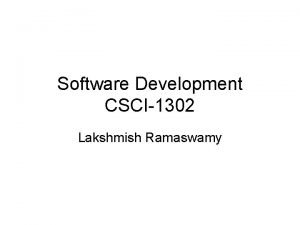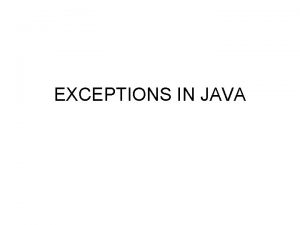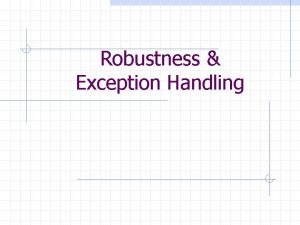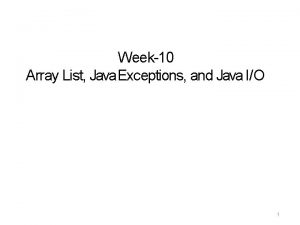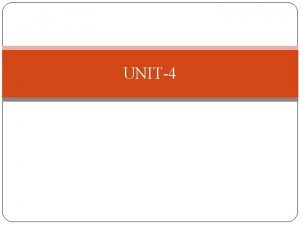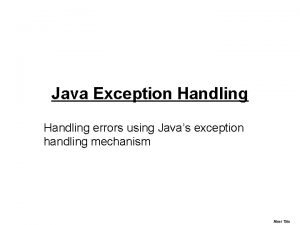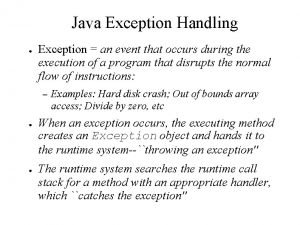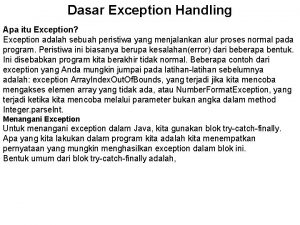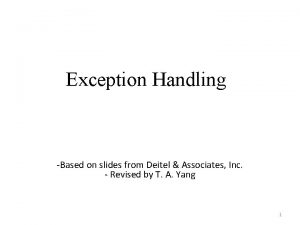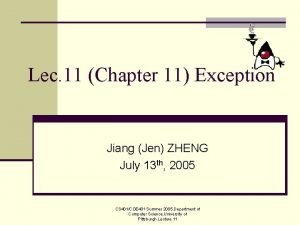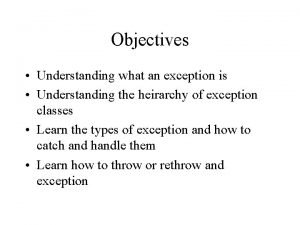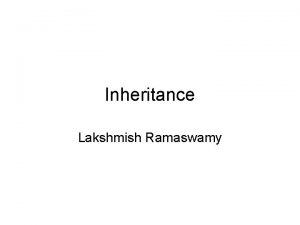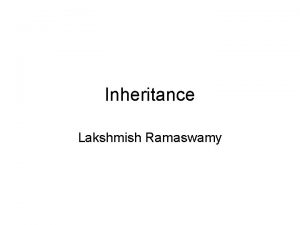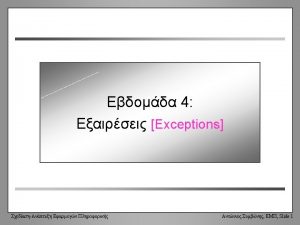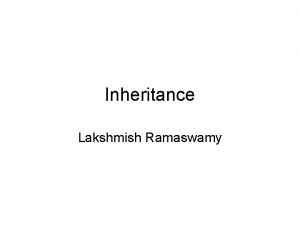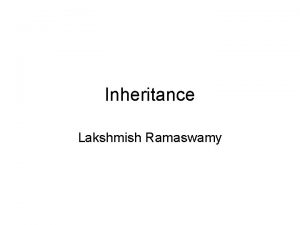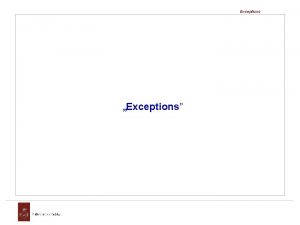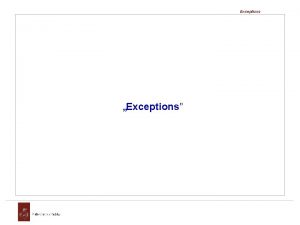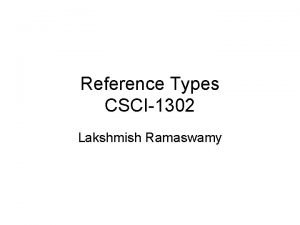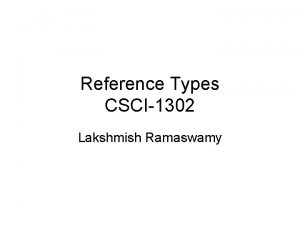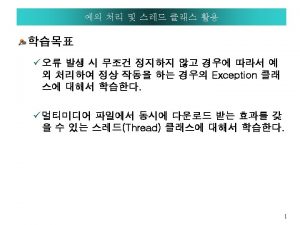Inheritance Lakshmish Ramaswamy Exception Hierarchy Exceptions in Java














- Slides: 14

Inheritance Lakshmish Ramaswamy

Exception Hierarchy • Exceptions in Java are organized as a hierarchy • Root is Throwable – Set of Print. Stack. Trace methods, pair of constructor and to. String method • First level children Error and Exception • Any exception that is not Run. Time. Exception is checked exception • Generally, exception extends another exception but provides constructors


Nested Classes • A class declaration within another class declaration (the outer class) – The keyword “static” is used before inner classname • The inner class is considered as a member of outer class • Can be public, private, package or protected • Typically private • Inner class methods can access private static members of the outer class and private instance members when given a reference

Recursion Lakshmish Ramaswamy

Basics of Recursion • A recursive method makes a call to itself directly or indirectly • Is this not endless circular logic? – Call is for a simpler instance • Several real-world applications are recursive – Dictionary lookup for definitions – Scanning files on a computer – Computer languages

A Simple Example • Calculate sum of first N integers (S(N)) • We know S(1) = 1 • S(N) can be expressed as S(N) = S(N-1) + N – S(2) = 2 + S(1) – S(3) = S(2) + 3 – S(N) = N(N+1)/2 <---- Closed form • Closed form are often complex • Recursive expressions might be simpler

Recursive Method for S(N)

Points to Note • Function calls a clone of itself (note the difference in parameters) • Only one clone is active at any instance – Computer does all the book keeping for you • Base case – Instance that can be solved without recursion – S(1) is the base case • Recursive call should make progress towards base case

Two Rules • Always have at least one base case solved without recursion • Any recursive call should make progress towards base case

Second Example • Printing numbers in any base • Simpler case – Printing number in decimal form – No method that can print an integer – Method that can print a single character – Digits are treated as characters • print(2457) can be expressed as print(245) followed by printing 7 (via character printing method)

Decimal Printing Method • Identify the base condition? • How is the progress done?

Printing Number in any Base • Exception if base > 16 • Infinite loop if base is 1 – Notice identical call to the method (No progress)

Robust Implementation
 Lakshmish ramaswamy
Lakshmish ramaswamy Exception class hierarchy in java
Exception class hierarchy in java Java unchecked exceptions list
Java unchecked exceptions list List of java exceptions
List of java exceptions Custom exceptions in java
Custom exceptions in java Krishna ramaswamy
Krishna ramaswamy Which of the following is not valid is pl/sql *
Which of the following is not valid is pl/sql * Prema ramaswamy md
Prema ramaswamy md Extends and implements difference
Extends and implements difference Java exception error
Java exception error Exception vs error in java
Exception vs error in java Exception adalah
Exception adalah Exception handling in java
Exception handling in java Java exception localized message
Java exception localized message Java unchecked exception
Java unchecked exception
